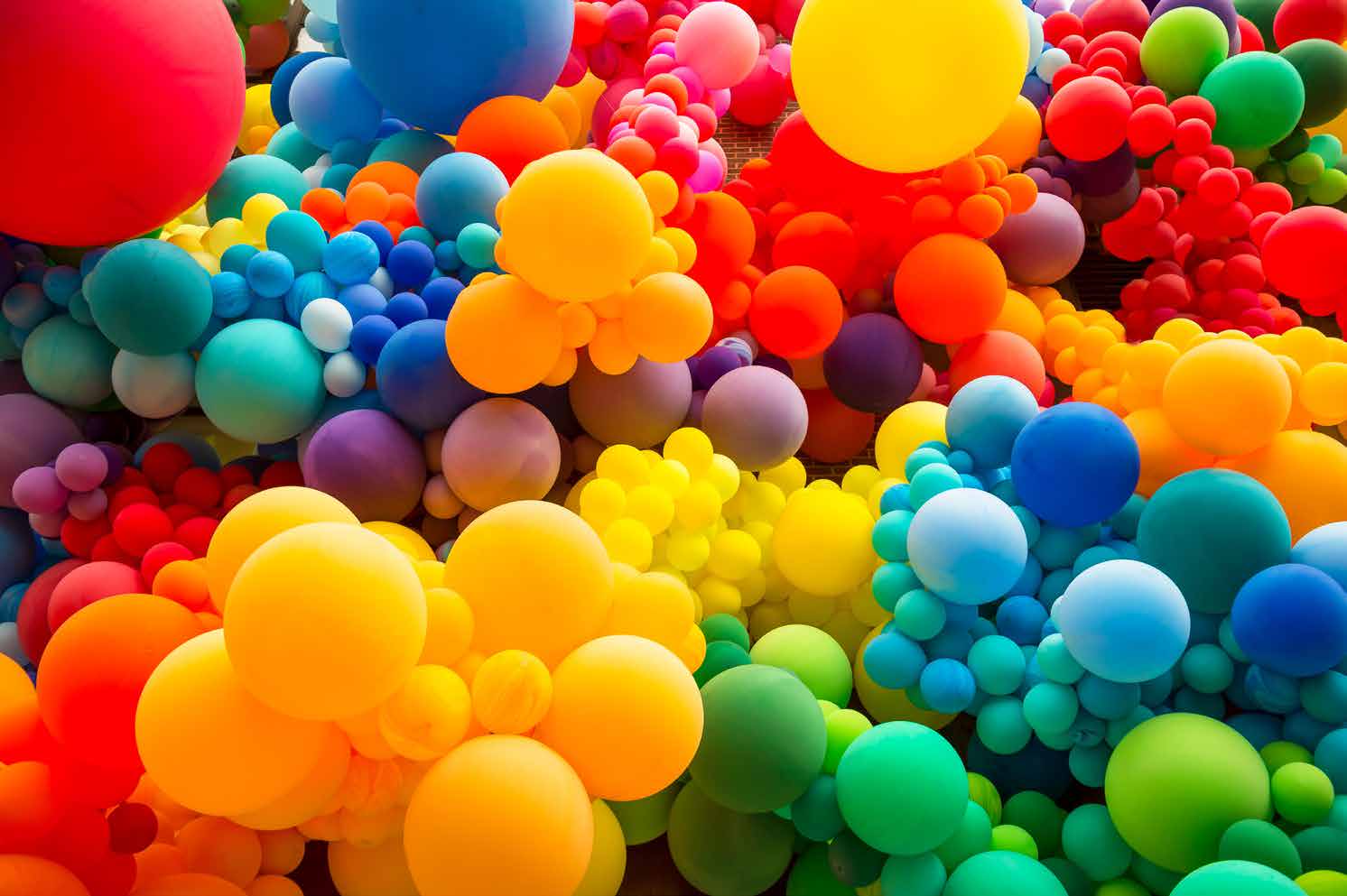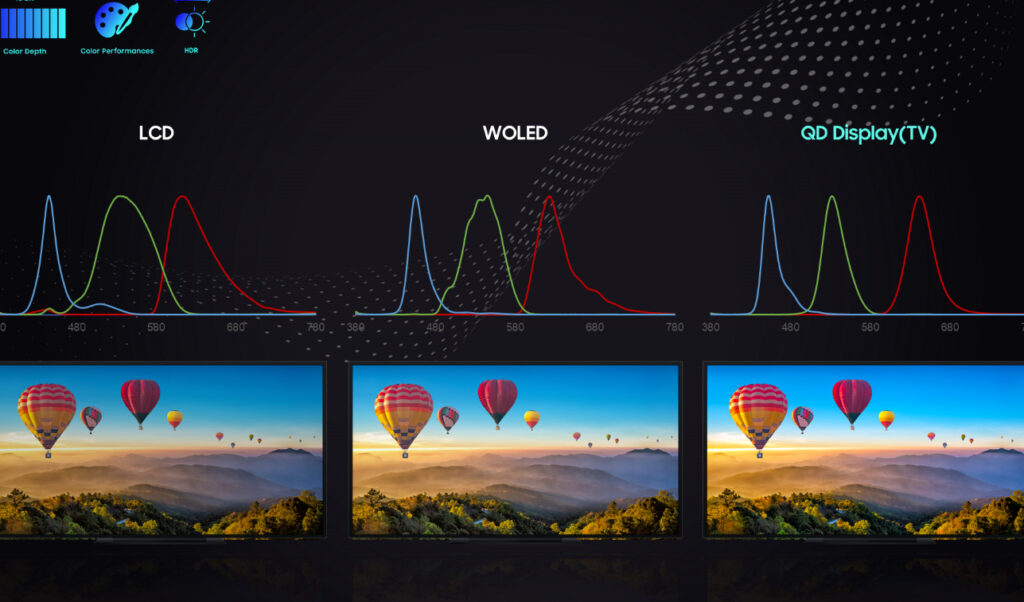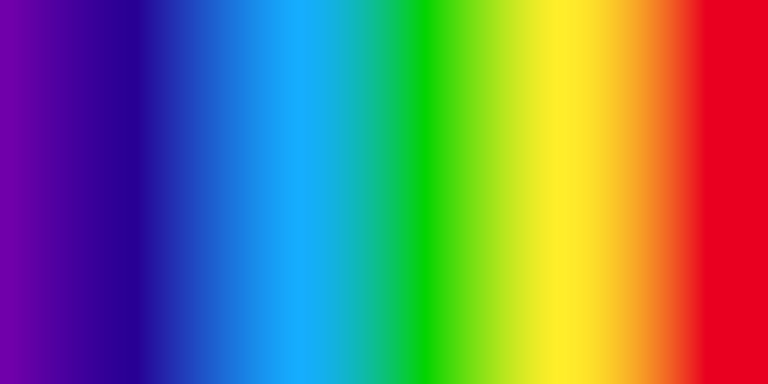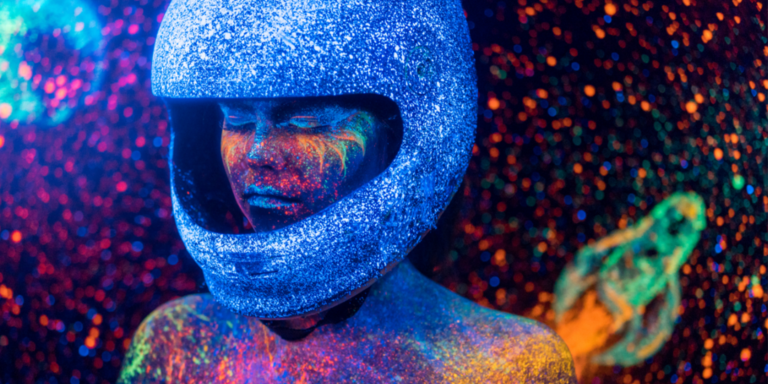

Why is Color Important in Displays?
Discover how color impacts watching movies, why color matters, and how you can take your movie-viewing experience to the next level with QD-OLED.
Why is Color Important in Displays?
Since movies evolved from their early black and white origins, color has been a significant part of cinema.
The color you see on a display impacts how you enjoy a film — whether you’re watching on the big screen or at home on your TV. Color adds depth, dimension, and improves likeness to reality.
We’ll explore why color is important in movies and how you can take your home viewing experience to the next level with QD-OLED’s stunning color performance.
The importance of color in movies
Whether you realize it or not, color is a huge part of how we enjoy a movie.
Think about Wes Anderson movies, for example. From the quirky pink hues of The Grand Budapest Hotel to the nostalgic color palette used in Moonrise Kingdom, color is arguably as crucial to these films as the script.
But it’s not just there for aesthetic purposes. Color also shapes the story and helps us empathize with the characters on screen.
Consider the blue tones of Leonardo DiCaprio’s Oscar-winning gritty survival movie The Revenant. The cool tones on-screen set the somber mood and make us feel as if we’re out there in the snowy landscape.
And then there are the brighter palettes of children’s animations, such as Disney Pixar movies. Take Coco. This uses saturated purples and oranges to show Mexico and takes this brightness even further when the movie enters the Land of the Dead. And these colors are used selectively throughout the movie to express emotions.
Whatever genre you’re watching, color has been chosen to impact your viewing experience. Filmmakers use color in movies to set the scene and to manipulate our emotions. Many of us will know how the weather can indicate a certain mood, such as rain for sadness. Adjusting color is another tool directors can use to show the mood visually.
Filmmakers will consider color psychology when designing their movies. In simple terms, reds can represent love, passion, violence, danger, anger, and power. In comparison, greens might show nature, immaturity, corruption, or an ominous feeling. Every color has a different connotation — and a different effect on our mood.
The reason this works so well in movies is that color palettes influence our emotions. They set the tone of an entire film or emphasize a specific scene. The shades filmmakers use are intentional; they choose hues to influence how we interpret what we’re watching. And that’s why it’s essential to find a display that shows a movie’s colors as the director intended.
Upgrade your movie experience with QD-OLED
The best way to get the director-level color experience is with the QD-OLED. The new technology enables maximum enjoyment of color so that you can see a movie in all its glory. Seeing a full range of colors captures the full experience of the emotions.
The majority of current displays use a white backlight source (LED or WOLED) and employ a color filter to create red, green, and blue. But QD-OLED is different. QD-OLED displays are tri-luminous since they use red, green, and blue light to recreate the image — and every color you see on the screen. QD-OLED is a game-changer because it introduces an industry-first color conversion technology instead of color filtering. Color conversion will significantly improve the colors you see on your screen.
QD-OLED uses a self-emitting layers producing blue light and advanced, red, and green quantum dots to create color. This enables a wider color gamut and reproduces colors more accurately across the luminosity range. This innovative process ensures that QD-OLED can produce finely tuned wavelengths of each red, green, and blue color.

These narrow-focused cones enable more colors to be accurately recreated, making the display brighter and more life-like. And, of course, making your movie-watching experience more engaging.
Want to know more about how QD-OLED creates these colors? Read our guide on QD-OLED’s color performance.
It’s time to change how you watch movies
If you want uncompromising picture quality, look no further than QD-OLED.
Its high fidelity recreation of colors stays true to the creators’ intent. Thanks to this innovative technology, it’s possible to see movies at home as the filmmaker desired.
With colors that pop and visuals that delight, QD-OLED will forever change your viewing experience. It’s time to take the quantum leap.



39 thoughts on “Why is Color Important in Displays?”
Comments are closed.